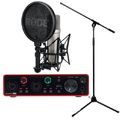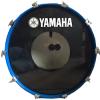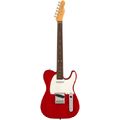Drumming

Member
Posts: 8
Joined: 26 ago 2016
I'm a guitar player and started learning to play the drums nearly 2 years ago. Wanted some opinions on my progress to this point and what I can do to improve.
This video has 5 short samples.
[youtube]hJ6BRAgUJxI[/youtube]
This video has 5 short samples.
[youtube]hJ6BRAgUJxI[/youtube]

Member
Posts: 8
Joined: 26 ago 2016
kinda feel silly...I see I should have posted this in the drumming category

Focusrite Scarlett 2i2 3rd NT1A Bundle
Rode NT1-A Complete Vocal Recording

299 €
iThis widget links to Thomann, our affiliate partner. We may receive a commission when you purchase a product there.
Visit Shop
Member
Posts: 0
Joined: 15 mag 2014
Hi huntc1129 rudiments etc. are the ticket. Think independent your left hand from right while playing and play hats more with left hand if right handed drummer. G
SUPPORTER
Posts: 2942
Joined: 30 dic 2010
just noticed this post and had a look...
man, you need to get a different chair first thing! no way to play drums on a swirling office chair with armrests, that just wouldn't ever work for me.
What I can tell by watching you is that you probably don't play a "real" drumset much, the way you are hitting things shows that.
I'm sorry, I don't want to go into the "I like to diss electric drums" corner with saying this, but watching the video gave me the impression that E-drums do not really seem to train certain physical aspects of playing the way analog drums do.
I feel you should maybe seek the experience of "how good to I sound on real drums?", you may realize some of the things you don't like about your playing are due to the edrums, not to your lack of skill, which you obviously have if you started two years ago. Just my 2 cent on the fly, no offense meant.
man, you need to get a different chair first thing! no way to play drums on a swirling office chair with armrests, that just wouldn't ever work for me.
What I can tell by watching you is that you probably don't play a "real" drumset much, the way you are hitting things shows that.
I'm sorry, I don't want to go into the "I like to diss electric drums" corner with saying this, but watching the video gave me the impression that E-drums do not really seem to train certain physical aspects of playing the way analog drums do.
I feel you should maybe seek the experience of "how good to I sound on real drums?", you may realize some of the things you don't like about your playing are due to the edrums, not to your lack of skill, which you obviously have if you started two years ago. Just my 2 cent on the fly, no offense meant.
Administrator
Posts: 115
Joined: 24 mar 2014
Hey Hunt...
I think your playing sounds fine. The thing I think you could improve upon is the ergonomics of your kit. As Dick mentioned playing an E kit is different than playing an acoustic kit. I only play on the E kit these days but grew up playing real drums. One thing I found tricky when I transitioned was setting the set up to feel like my acoustic kits. The rule of thumb is to play and close your eyes. Start hitting the drums where your hands fall naturally... this is the comfort zone of your body, now start adjusting your kit into this comfort zone, this goes for all 4 limbs (and all the pieces of your kit)... the other thing is the angle of your toms and cymbals... they are very severe... this makes playing them and hitting them more difficult... I play all my cymbals almost flat, and my toms too... everything om my kit is within easy distance with my hands... you play with your wrists not your arms... that is key. Try tinkering with your kit to get it right, it may take a long time. I switched to open handed drumming 4 years ago and it took me a couple months to get my kit right, drove me nuts but it was fun.... on my home page you can see a pic of my kit, if that helps... oh yeah, and get a drum throne!!
cheers rp3
I think your playing sounds fine. The thing I think you could improve upon is the ergonomics of your kit. As Dick mentioned playing an E kit is different than playing an acoustic kit. I only play on the E kit these days but grew up playing real drums. One thing I found tricky when I transitioned was setting the set up to feel like my acoustic kits. The rule of thumb is to play and close your eyes. Start hitting the drums where your hands fall naturally... this is the comfort zone of your body, now start adjusting your kit into this comfort zone, this goes for all 4 limbs (and all the pieces of your kit)... the other thing is the angle of your toms and cymbals... they are very severe... this makes playing them and hitting them more difficult... I play all my cymbals almost flat, and my toms too... everything om my kit is within easy distance with my hands... you play with your wrists not your arms... that is key. Try tinkering with your kit to get it right, it may take a long time. I switched to open handed drumming 4 years ago and it took me a couple months to get my kit right, drove me nuts but it was fun.... on my home page you can see a pic of my kit, if that helps... oh yeah, and get a drum throne!!
cheers rp3

Member
Posts: 522
Joined: 27 feb 2015
Everything below is 'in my opinion' - I don't mean to offend!! Just facts and suggestions as I see them based on my experience. But great playing - it's overall very good.
First the positives:
- For 'only' two years playing, your feel is actually very good and free-flowing. I know vastly more experienced players who sound way more wooden!
- Posture. Your posture is also good - good straight back and very little hunching. This is *far* more important than you think (see negatives).
- Stick control. This is good for a self-taught player of your experience. You're keeping the majority of your motion in your wrists and not your arms - this is why your playing sounds fluid.
And the negatives:
- As mentioned above: that chair. Get a drum stool. Stools are difficult because they're often not very cheap and therefore seemingly hard to justify the cost of. But [u]buy a stool that's comfy for you[/u]. Not the cheapest. Not the most expensive. Just the one that works for you. Your drumming posture, given that chair and the limitations those arms cause, is surprisingly good. Carry on using that chair and you will suffer in the long term. As someone, when I was a learner, who once spent his time after a two-hour gig laying on the floor unable to move whilst the band packed his kit up, bad posture can be [i]very[/i] bad over sustained playing times. I use a Roc 'n' Soc stool and, whilst one of the most stupidly expensive ones you can buy (aren't they always?), it was by far and away the most comfortable and supportive stool I tried. These days I, quite literally, have the best seat in the house. When I'm spending upwards of two hours on that thing, it needs to be right. Probably the single most important investment I made in my playing. I'm not saying buy a Roc 'n' Soc, I'm saying take your time in choosing the stool and be prepared for the cost to be highly variable.
- General control. This is the hardest one of all. By control, I mean playing time that fits, belongs and is appropriate. I'll come to this below.
- E-kits. Like Dick, I do not want to knock e-kits but they are a very different (and often flattering) playing experience. These can form habits that, if you get on an acoustic kit, come as a bit of a shock when you find you can't play things you thought you can! E-kits require far less effort to get a satisfying sound and result from, especially in regard to rolls and fast fills. Not a complaint, just something to be aware of.
Suggestions:
Overall, I think your playing is very good but I have some suggestions to help you get more out of your playing. These are exercises and techniques that worked for me over the years.
1) Rudiments:
Don't go the whole hog and learn the full 26 'Buddy Rich Rudiments'. But there are four or five that are well worth investing your time in properly:
- Single Stroke Roll
- Double Stroke Roll
- Flam
- Ruff
- Paradiddle
All rudiments should be practised in the following fashion: Start slow, build up speed slowly until you can no longer go any faster without losing control - don't try going beyond your ability - slow down again.
2) Timekeeping:
Practise everything you can to a metronome or click track. Whilst it seems alien at first, you will learn to make it your guide and not your master. Being able to play with a click as your guide is a dark art but well worth the time investment.
3) Control:
As I mentioned above, control. This is not about stick or technical control, this is about musical control. Watching your video, you have a tendency to overplay - loads of fills, etc.. This is perfectly natural, very common and I'm just as guilty as anyone else of it. The drummer's job is to keep a time that others can rely on. Fills are there to cue changes in the music (usually).
What really changed my approach was switching from the attitude of 'what I'm playing' to 'how well I belong to the music'. And often this just means playing simple, good-quality time. Focus on [i]how you play[/i] over [i]what you play[/i]. In reality, most of the beats drummers play in modern music are different kick/hi-hat combinations of the same backbeat. Focus on getting these nailed to as high a standard as you can.
Try playing a dead straight, four-on-the-floor beat for two minutes with no variations or fills. It's a lot, lot harder than you think. But this kind of discipline is vital to good-quality drumming. Bands, in my experience, [u]always[/u] prefer a simple, solid and reliable drummer over one playing ten thousand notes to the bar!
A good exercise over the years for me is playing a standard backbeat but displacing the bass drum by a sixteenth note every two bars, keeping a constant time. Start with the kick on the 1 and 3 (snare on 2 and 4 as normal). After two bars, play the kick on the 1E and 3E. After two more bars, move the kick along another sixteenth and play the kick on the 1& and 3& and then on the 1A and 3A, then on the 2 and 4 (i.e. with the snare). With practice, this will enable you to place the kick drum where you want/need without a second thought. Most kick drum patterns will either counter or follow the bass line. Being able to place the kick drum in almost any combination without upsetting the flow of the hi-hat/snare is vital to fluid, good-quality playing.
Do this playing 1/4, 1/8 and 1/16 notes on the hi-hat. And do it to a metronome. If it's not clear, I'll try and upload an example of it.
The final exercise I recommend is note subdivisions and making them feel natural. It's a key skill for a drummer and can make for very effective changes being able to switch between, say, 16th notes and 1/4 triplets in a split second. The way I go about it is:
- Set metronome to a comfy tempo (say 110 bpm). Play each of the below for two bars before switching to the next one. Everything is played LRLRLRLR on the snare.
- Play 1/4 notes
- Play 1/4 triplets
- Play 1/8 notes
- Play 1/8 triplets
- Play 16th notes
- Play 16th note triplets
Once you get to the last one, go backwards through that list all the way back to 1/4 notes. Play each for two or four bars. This will really help you understand rhythm changes and recall them at a drop of a hat!
Finally: go and seek out uploads on here by DaFunkyDrummer. Listen to *how* he plays. He rarely breaks out the licks and chops (but when he does it's soul-destroying!!!) - most of what he uploads is actually fairly simple but played to a very, very high standard and grooves beautifully. He is a text book example of a professional drummer. He plays only what is needed, nothing more, nothing less.
That's enough for now!!!! Sorry for long reply... Just talking too much as usual.
First the positives:
- For 'only' two years playing, your feel is actually very good and free-flowing. I know vastly more experienced players who sound way more wooden!
- Posture. Your posture is also good - good straight back and very little hunching. This is *far* more important than you think (see negatives).
- Stick control. This is good for a self-taught player of your experience. You're keeping the majority of your motion in your wrists and not your arms - this is why your playing sounds fluid.
And the negatives:
- As mentioned above: that chair. Get a drum stool. Stools are difficult because they're often not very cheap and therefore seemingly hard to justify the cost of. But [u]buy a stool that's comfy for you[/u]. Not the cheapest. Not the most expensive. Just the one that works for you. Your drumming posture, given that chair and the limitations those arms cause, is surprisingly good. Carry on using that chair and you will suffer in the long term. As someone, when I was a learner, who once spent his time after a two-hour gig laying on the floor unable to move whilst the band packed his kit up, bad posture can be [i]very[/i] bad over sustained playing times. I use a Roc 'n' Soc stool and, whilst one of the most stupidly expensive ones you can buy (aren't they always?), it was by far and away the most comfortable and supportive stool I tried. These days I, quite literally, have the best seat in the house. When I'm spending upwards of two hours on that thing, it needs to be right. Probably the single most important investment I made in my playing. I'm not saying buy a Roc 'n' Soc, I'm saying take your time in choosing the stool and be prepared for the cost to be highly variable.
- General control. This is the hardest one of all. By control, I mean playing time that fits, belongs and is appropriate. I'll come to this below.
- E-kits. Like Dick, I do not want to knock e-kits but they are a very different (and often flattering) playing experience. These can form habits that, if you get on an acoustic kit, come as a bit of a shock when you find you can't play things you thought you can! E-kits require far less effort to get a satisfying sound and result from, especially in regard to rolls and fast fills. Not a complaint, just something to be aware of.
Suggestions:
Overall, I think your playing is very good but I have some suggestions to help you get more out of your playing. These are exercises and techniques that worked for me over the years.
1) Rudiments:
Don't go the whole hog and learn the full 26 'Buddy Rich Rudiments'. But there are four or five that are well worth investing your time in properly:
- Single Stroke Roll
- Double Stroke Roll
- Flam
- Ruff
- Paradiddle
All rudiments should be practised in the following fashion: Start slow, build up speed slowly until you can no longer go any faster without losing control - don't try going beyond your ability - slow down again.
2) Timekeeping:
Practise everything you can to a metronome or click track. Whilst it seems alien at first, you will learn to make it your guide and not your master. Being able to play with a click as your guide is a dark art but well worth the time investment.
3) Control:
As I mentioned above, control. This is not about stick or technical control, this is about musical control. Watching your video, you have a tendency to overplay - loads of fills, etc.. This is perfectly natural, very common and I'm just as guilty as anyone else of it. The drummer's job is to keep a time that others can rely on. Fills are there to cue changes in the music (usually).
What really changed my approach was switching from the attitude of 'what I'm playing' to 'how well I belong to the music'. And often this just means playing simple, good-quality time. Focus on [i]how you play[/i] over [i]what you play[/i]. In reality, most of the beats drummers play in modern music are different kick/hi-hat combinations of the same backbeat. Focus on getting these nailed to as high a standard as you can.
Try playing a dead straight, four-on-the-floor beat for two minutes with no variations or fills. It's a lot, lot harder than you think. But this kind of discipline is vital to good-quality drumming. Bands, in my experience, [u]always[/u] prefer a simple, solid and reliable drummer over one playing ten thousand notes to the bar!
A good exercise over the years for me is playing a standard backbeat but displacing the bass drum by a sixteenth note every two bars, keeping a constant time. Start with the kick on the 1 and 3 (snare on 2 and 4 as normal). After two bars, play the kick on the 1E and 3E. After two more bars, move the kick along another sixteenth and play the kick on the 1& and 3& and then on the 1A and 3A, then on the 2 and 4 (i.e. with the snare). With practice, this will enable you to place the kick drum where you want/need without a second thought. Most kick drum patterns will either counter or follow the bass line. Being able to place the kick drum in almost any combination without upsetting the flow of the hi-hat/snare is vital to fluid, good-quality playing.
Do this playing 1/4, 1/8 and 1/16 notes on the hi-hat. And do it to a metronome. If it's not clear, I'll try and upload an example of it.
The final exercise I recommend is note subdivisions and making them feel natural. It's a key skill for a drummer and can make for very effective changes being able to switch between, say, 16th notes and 1/4 triplets in a split second. The way I go about it is:
- Set metronome to a comfy tempo (say 110 bpm). Play each of the below for two bars before switching to the next one. Everything is played LRLRLRLR on the snare.
- Play 1/4 notes
- Play 1/4 triplets
- Play 1/8 notes
- Play 1/8 triplets
- Play 16th notes
- Play 16th note triplets
Once you get to the last one, go backwards through that list all the way back to 1/4 notes. Play each for two or four bars. This will really help you understand rhythm changes and recall them at a drop of a hat!
Finally: go and seek out uploads on here by DaFunkyDrummer. Listen to *how* he plays. He rarely breaks out the licks and chops (but when he does it's soul-destroying!!!) - most of what he uploads is actually fairly simple but played to a very, very high standard and grooves beautifully. He is a text book example of a professional drummer. He plays only what is needed, nothing more, nothing less.
That's enough for now!!!! Sorry for long reply... Just talking too much as usual.
Member
Posts: 0
Joined: 15 mag 2014
I use an office chair from a garage sale with a multitude of adjustments and hydraulic leveling. Most of all the chair has a back which offers wonderful support after many hours of drum playing. Yes do remove the arms, quite impossible play without that.It was a very cheap purchase better than many drum thrones I've played on.
Go on YouTube and look up all different styles of drummers. Have learned quite a bit from Steve Smith. Listen to different drummers watch different drummers play.
I played a kit the other night at church ,absolutely impossible to play. The kick pedal was way too tight for triplets. This drummer was happy with this kit but would never work for me. We are all different physically so that translates over into your drum kit with different angles and heights.Choose what is comfortable but yet efficient. Use what works for you, keeping in mind how can I better improve my playing.Measure your results this is most important. Is playing easier am I able to do more difficult drumbeats? etc.
You will be developing your own style, basically your own unique way you approach playing the kit. Can't stress it enough listen to many different styles of music and over many decades.
Don't get discouraged and frustrated there will be those days just stay with the stuff. Many people are not drummers in natural ability but due to perseverance and practice they become good drummers.
Be unconventional, I love Stewart Copeland's drumming.It is not enough to say that he does not just play four four timing as a lot of drummers do.
There are definitely times you want to play it simple, especially in soft passages. Over drumming is over drumming. Always try to find the right balance between enough and too much. Just like a guitarist that crams too many notes into a measure.I love to overplay if I got paid for each note I would be quite rich.
All really practicing is, is building motor memory with the brain. It is that drumming really is based a lot on coordination in the beginning stages and then the good stuff.
Go on YouTube and look up all different styles of drummers. Have learned quite a bit from Steve Smith. Listen to different drummers watch different drummers play.
I played a kit the other night at church ,absolutely impossible to play. The kick pedal was way too tight for triplets. This drummer was happy with this kit but would never work for me. We are all different physically so that translates over into your drum kit with different angles and heights.Choose what is comfortable but yet efficient. Use what works for you, keeping in mind how can I better improve my playing.Measure your results this is most important. Is playing easier am I able to do more difficult drumbeats? etc.
You will be developing your own style, basically your own unique way you approach playing the kit. Can't stress it enough listen to many different styles of music and over many decades.
Don't get discouraged and frustrated there will be those days just stay with the stuff. Many people are not drummers in natural ability but due to perseverance and practice they become good drummers.
Be unconventional, I love Stewart Copeland's drumming.It is not enough to say that he does not just play four four timing as a lot of drummers do.
There are definitely times you want to play it simple, especially in soft passages. Over drumming is over drumming. Always try to find the right balance between enough and too much. Just like a guitarist that crams too many notes into a measure.I love to overplay if I got paid for each note I would be quite rich.
All really practicing is, is building motor memory with the brain. It is that drumming really is based a lot on coordination in the beginning stages and then the good stuff.

Member
Posts: 8
Joined: 26 ago 2016
Wow!!! I have been offline for a month and I come back here and I didn't expect to have so many of you give me such incredible advice!! I've printed out a lot of this! Thank you guys for taking the time to give me some great pointers. I did purchase a nice comfy drum throne!
To be honest, I didn't originally plan on putting much time or effort into drums. Guitar is what I play out. I was frustrated with trying to find drummers and I wanted to take my recordings beyond the drum machine. Along the way I found that I really really like to play the drums! Agree about the E-Kit. It seems the more I progress, the more I run into the limitations with it. So now it's gotten a little frustrating. Because of neighbors and small space, having a real kit won't happen anytime soon. Would love to have the roland kit, but it's the price of a car! I do occasionally get to play a real kit, and there is an adjustment. Getting used to the hi hat and learning how hard and where to hit real cymbals has been a biggie.
Thank you guys so very much for taking the time to give me advice!
To be honest, I didn't originally plan on putting much time or effort into drums. Guitar is what I play out. I was frustrated with trying to find drummers and I wanted to take my recordings beyond the drum machine. Along the way I found that I really really like to play the drums! Agree about the E-Kit. It seems the more I progress, the more I run into the limitations with it. So now it's gotten a little frustrating. Because of neighbors and small space, having a real kit won't happen anytime soon. Would love to have the roland kit, but it's the price of a car! I do occasionally get to play a real kit, and there is an adjustment. Getting used to the hi hat and learning how hard and where to hit real cymbals has been a biggie.
Thank you guys so very much for taking the time to give me advice!

Fender AV II 63 TELE RW RED TRANS
Electric Guitar

2.249 €
iThis widget links to Thomann, our affiliate partner. We may receive a commission when you purchase a product there.
Visit Shop
wikiloops online jamsessions are brought to you with friendly
support by:

I just love this place..... ;)
woXey